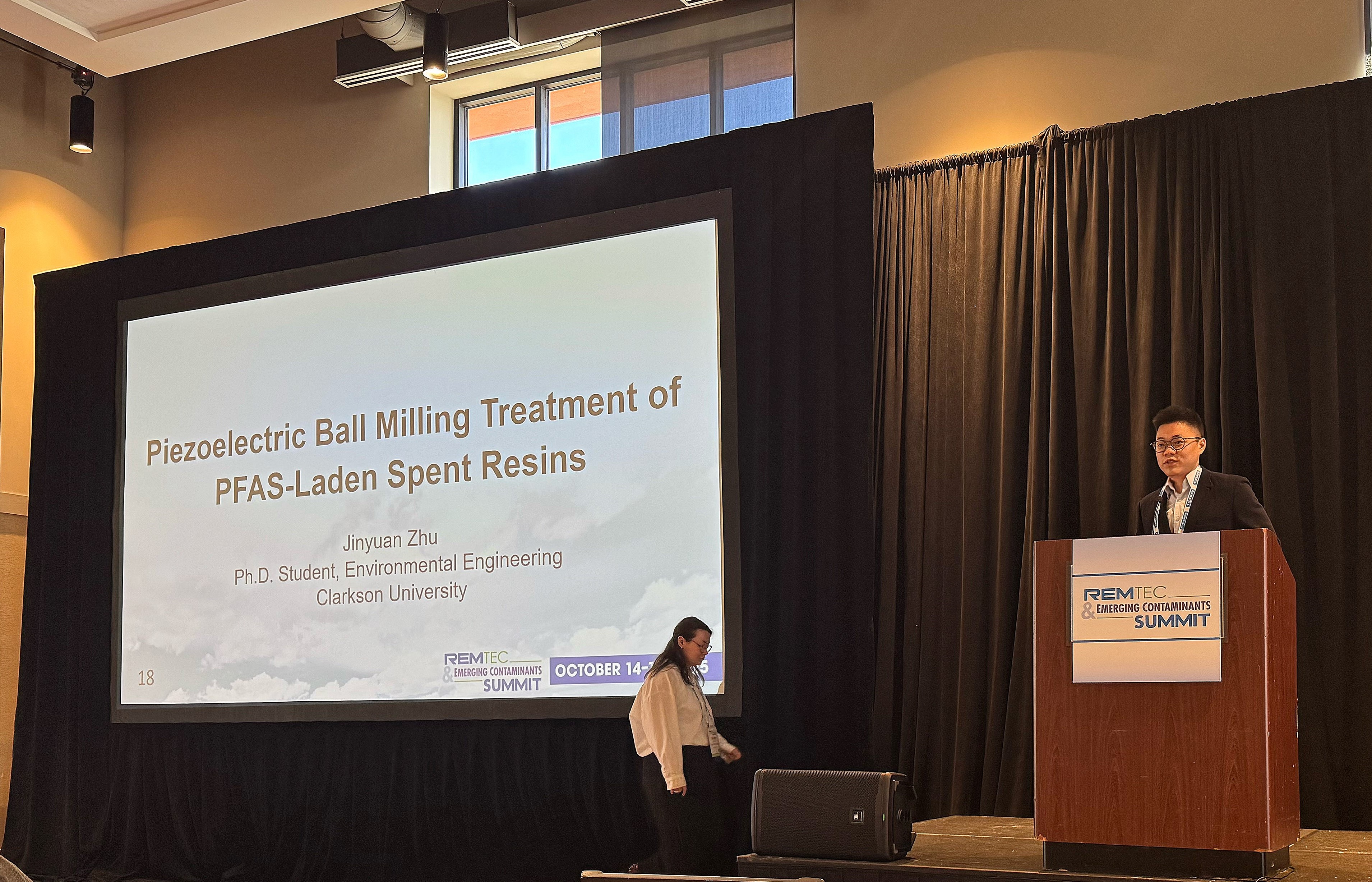Clarkson Research Offers Breakthrough in PFAS Destruction Technology
A new technology developed at Clarkson University could change how communities and industries deal with PFAS, a group of “forever chemicals” that have long resisted cleanup efforts.

PhD student Jinyuan Zhu, from Clarkson’s Department of Civil and Environmental Engineering, recently presented this groundbreaking work at the 2025 RemTEC & Emerging Contaminants Summit in Westminster, Colorado — one of the leading conferences for environmental remediation. His research shows a simple, low-cost way to permanently destroy PFAS in solid waste using piezoelectric ball milling, a process that uses mechanical energy instead of heat or solvents to break apart the strong chemical bonds that make PFAS so persistent.
At the RemTEC Summit, Zhu’s poster, titled “Piezoelectric Ball Milling Treatment of PFAS-Laden Spent Resins,” earned first place in the Student Poster Presentation Competition, standing out among top student researchers from across the country.
“This technology proves that PFAS removal is not a temporary fix — it’s a one-way ticket to complete destruction,” Zhu said. “By harnessing piezoelectric charge during milling, we can break the carbon–fluorine bonds at room temperature, offering a truly end-of-life solution for PFAS in solid waste.”
PFAS (per- and polyfluoroalkyl substances) are used in products like nonstick cookware, firefighting foam, and waterproof clothing, but they build up in the environment and the human body. Current disposal methods often move PFAS from one place to another instead of eliminating it. Zhu’s work, conducted under the guidance of Associate Professor of Civil and Environmental Engineering Yang Yang, offers a cleaner, more sustainable alternative that could make water treatment and waste management safer and simpler for both communities and industries.
The method shows great potential for treating spent ion-exchange resins, which represent one of the most challenging PFAS waste forms. As the water treatment sector increasingly relies on resins to capture PFAS from wastewater, developing an effective destruction strategy for these materials is critical. Because this method operates without solvents or high heat, it minimizes secondary pollution and energy consumption, while also facilitating scale-up for practical cleanup applications.
The findings presented at the conference were published earlier this year in Environmental Science & Technology Letters.
The work highlights Clarkson University’s leadership in developing practical, science-based solutions to environmental challenges, helping create a cleaner and safer world.
